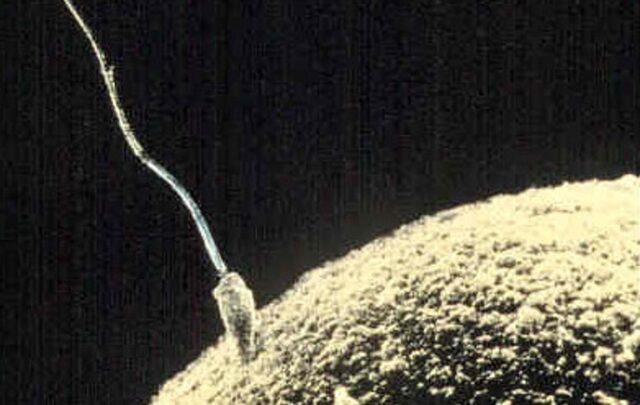Eric Cline wrote an excellent book on the end of the Bronze Age in the Mediterranean region but, unfortunately, it doesn’t arrive to a definite conclusion about the reasons of the collapse. Cline suggests that "several stressors" worked together to ensure the demise of this civilization. But this is very disappointing, to say the least. It is like a murder mystery where, at the end, we are told that the killer of Miss Scarlett could have been Professor Plum, Mrs. Peacock, Mrs. White, Reverend Green, or Colonel Mustard but, really, it seems that all of them simultaneously stabbed her.
Imagine a team of archaeologists living three thousand years in the future. They work at digging out the remains of an ancient civilization on the Eastern shore of the Mediterranean Sea, a region that its ancient inhabitants called "Syria." The archaeologists find clear evidence that the Syrian civilization collapsed in correspondence of a series of disasters: a severe drought, a civil war, the destruction of cities by fire, foreign invaders, a reduction in population, and more. The evidence for these event is clear, but what exactly caused them? Our future archaeologists are baffled; they suspect that there is a single reason for this coalescence of disasters, but they can’t find proof of what it could have been. One of them proposes that it had to do with the fact the ancient Syrians were extracting something from underground and using it as a source of energy. But, without reliable data on the production trends, they cannot prove that oil depletion was the basic cause of the Syrian collapse.
Something similar is happening today to the archaeologists who try to understand the reasons of the collapse of the Mediterranean civilization of the end of the second millennium BCE; the end of the Bronze Age. We have archaeological evidence of a brilliant and thriving civilization: palaces, works of art, commerce, metallurgy, and more. But we have also evidence that this civilization met a violent end: there are traces of fires destroying palaces and cities, there is evidence of droughts and famine, and some of the people living in the region, the Hittites for instance, disappeared forever from history. But what caused the collapse? That’s a very difficult question.
Eric Cline’s book, titled "1177 BC" shines some light on the history of the Bronze Age civilization and its demise. As a book, it is well done and it summarizes very well the result of nearly two hundred years of archaeological studies. It is a fascinating story of a time that strikes our imagination as a refined and sophisticated world; not an empire, but a loose federation of peoples. Sometimes they were engaged at warring with each other, but more often in commerce and in cultural exchanges. We can’t imagine that such a sophisticated civilization would collapse so fast; possibly in just a few decades. And yet, it did.
So, what caused the collapse? Cline’s book is good evidence of how difficult it is to understand these phenomena. A whole chapter, the last one, is dedicated to explore the reasons for the collapse, but it doesn’t arrive to any definitive conclusion. As it is almost always the case when discussing societal collapse, we see different proposed reasons piling up: some experts favor external causes: invasions, droughts, earthquakes, volcanoes, or similar. Others seek for internal causes: rebellions, institutional decline, political struggle, and more. And some, including Cline himself, favor a combination of several causes. He writes:
"There probably was not a single driving force or trigger, but rather a number of different stressors, each of which forced the people to react in different ways to accommodate the changing situation(s)…. a series of stressors rather than a single driver is therefore advantageous in explaining the collapse at the end of the Late Bronze Age."
Unfortunately, this is far from being satisfactory. Suppose that I were to tell you "I am suffering of a number of different stressors, including fever, throat ache, sneezing, coughing, pain at the joints, and more." Then, you would look at me, perplexed, and say,"you mean you have a flu, right?" Yes, of course, all these different "stressors" result from a single cause: a viral infection. Just like a flu is a common illness in humans, collapse is such a common feature in human societies that we can hardly imagine that it could be caused by a fortuitous combinations of stressors, all acting in the same direction.
In examining this issue, a basic point is that societies are complex systems, and need to be understood as such. Unfortunately, the knowledge about complex system has not yet permeated the study of societal collapse, as it is amply demonstrated by the discussion in the last chapter of Cline’s book. Several authors have apparently tried to explain the collapse of the Bronze Age society in terms of what they call "complexity theory". But I am afraid they didn’t understand the theory very well. Just as an example, in the book we read a sentence taken from the work of Ken Dark who says ""The more complex a system is, the more liable it is to collapse." Now, this is simply wrong if it is applied to human organizations as complex systems, such a companies, or civilizations. And you don’t need to be an expert in complex systems to note that large and very complex systems tend to be more resilient than small ones. Compare, for instance, IBM with the large number of small upstart companies in information technologies that appear and quickly disappear. So, you just can’t invoke "complexity" as a mumbo-jumbo to explain everything, as Cline correctly notes in the book.
A lot of confusion in this area has arisen from the variability of the definition of "complex system;" there is not just one kind of complex system, there are several (and that is something you would expect since they are, indeed, complex!). One kind of complex system that has had a lot of success in the popular imagination is the "sandpile", proposed by Bak, Tang, and Wissental, a model that shows a series of small and large collapses. The problem is that the sandpile model is valid for some systems, but not for others. It works nicely for those systems which have only simple, short term interactions: the financial system, for instance. But it doesn’t work at all for systems which base their complexity on stabilizing feedbacks: civilizations, for instance. The difference should be clear: the financial system was never built with the idea that it should be stable. The opposite is true for a civilization or a large company, both have plenty of feedbacks designed to keep them stable or, if you prefer "resilient". Large organizations are often more resilient than small ones simply because they can afford more stabilization feedbacks.
Then, what can bring down a feedback-stabilized complex system? The answer is "a forcing that is strong enough." The term "forcing" is used in the study of system dynamics and it has the same meaning of the "stressor" employed by Cline in his discussion. A forcing is an external factor that affects the system and forces it to adapt by changing some of its parameters. If the forcing is really strong, the adaptation can take the shape of a fast and disastrous reduction in complexity; it is what we call "collapse". So, it is starting to appear clear that civilizations tend to collapse because they lose access to the resources that created them and allowed them to exist; often as the result of overexploitation. Over and over, civilizations have been brought down by soil erosion and the loss of agricultural productivity. Then, some civilizations have collapsed because of the depletion of the mineral resources that had created them, an example is the collapse of the modern Syrian state that I was describing at the beginning of this post. Another example is the collapse of the Roman Empire, It showed a lot of symptoms that we could call "stressors:" rebellions, corruption, wars, invasions, depopulation, and more. But they all originated from a single cause: the depletion of the gold mines of Spain which deprived the Imperial government of its fundamental control system: gold and silver coinage.
At this point, we can conclude that, most likely, there never were a combination of parallel stressors that brought down the Bronze Age Civilization. Rather, there was some basic factor that generated the various catastrophes that we observe today in the archaeological record. The problem is that we don’t know what this forcing was. There are elements showing that climatic change played a role, but we lack sufficient evidence to be sure that it was "the" cause of the collapse. So, perhaps it was mineral depletion that brought down this civilization? Maybe, and we can note how the defining term for this age is "bronze" and in order to have bronze you need to alloy copper with tin. And we know that there was plenty of copper available from mines in the Mediterranean region, but no tin; it had to be transported from a long and probably precarious supply route from the region we call Serbia today, or maybe from the Caucasus. If the people of the Bronze Age used bronze as currency, then their commercial network would have been badly disrupted by an interruption of the supply of tin. So, they might have been destroyed by the equivalent of a financial crisis.
Even though we cannot arrive to a definitive conclusion, the story of the Bronze Age civilization is part of the fascination we feel for the subject of civilization collapse. It is a fascination that derives from the fact that we may be seeing our "Western" civilization starting right now its final phase of collapse, after having badly depleted its sources of energy and generated the disastrous disruption of the ecosystem that we call "climate change." In our case, unlike for civilizations lost long ago, we have all the data we need to understand what happening. But we still don’t understand collapse.







